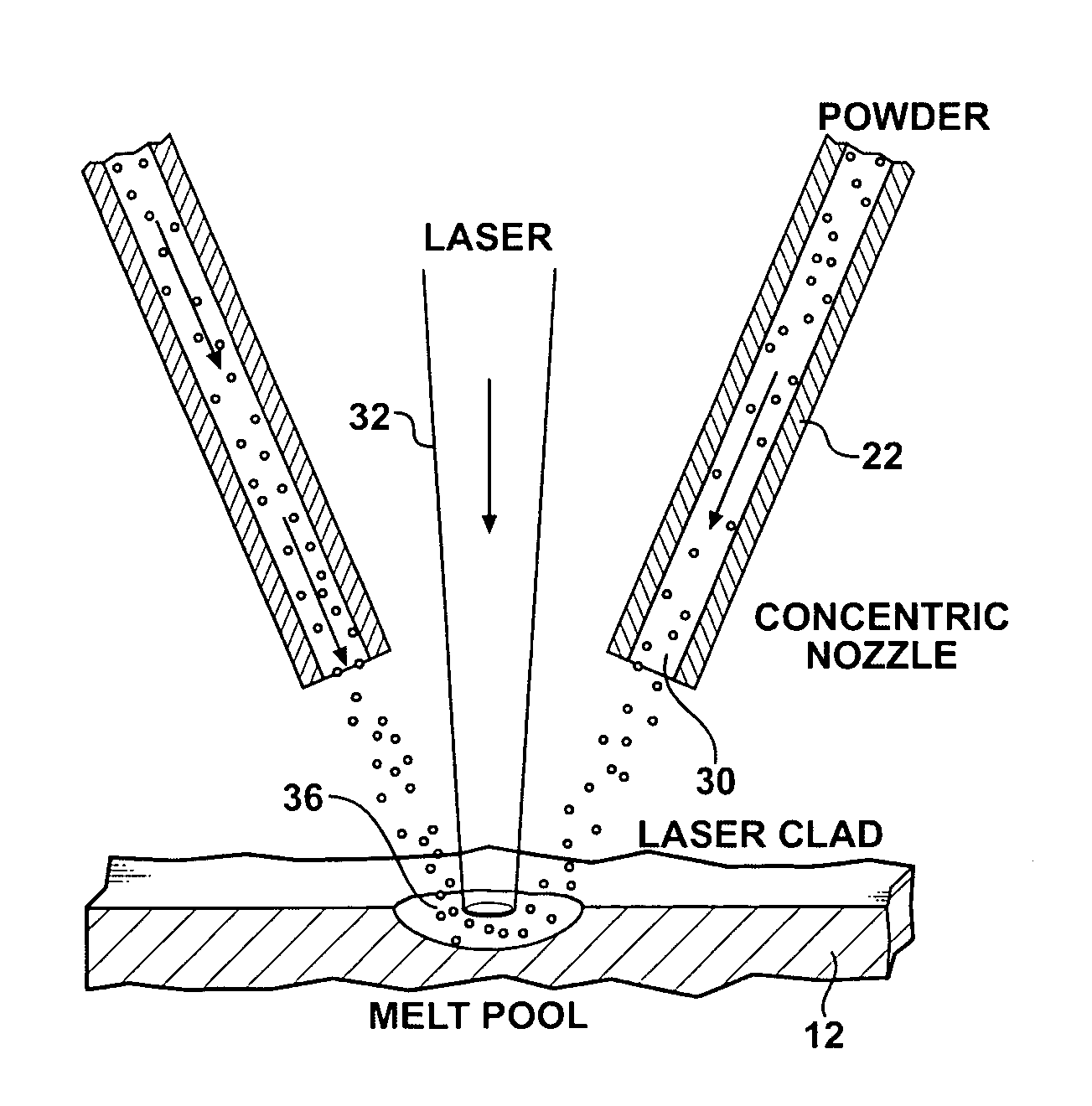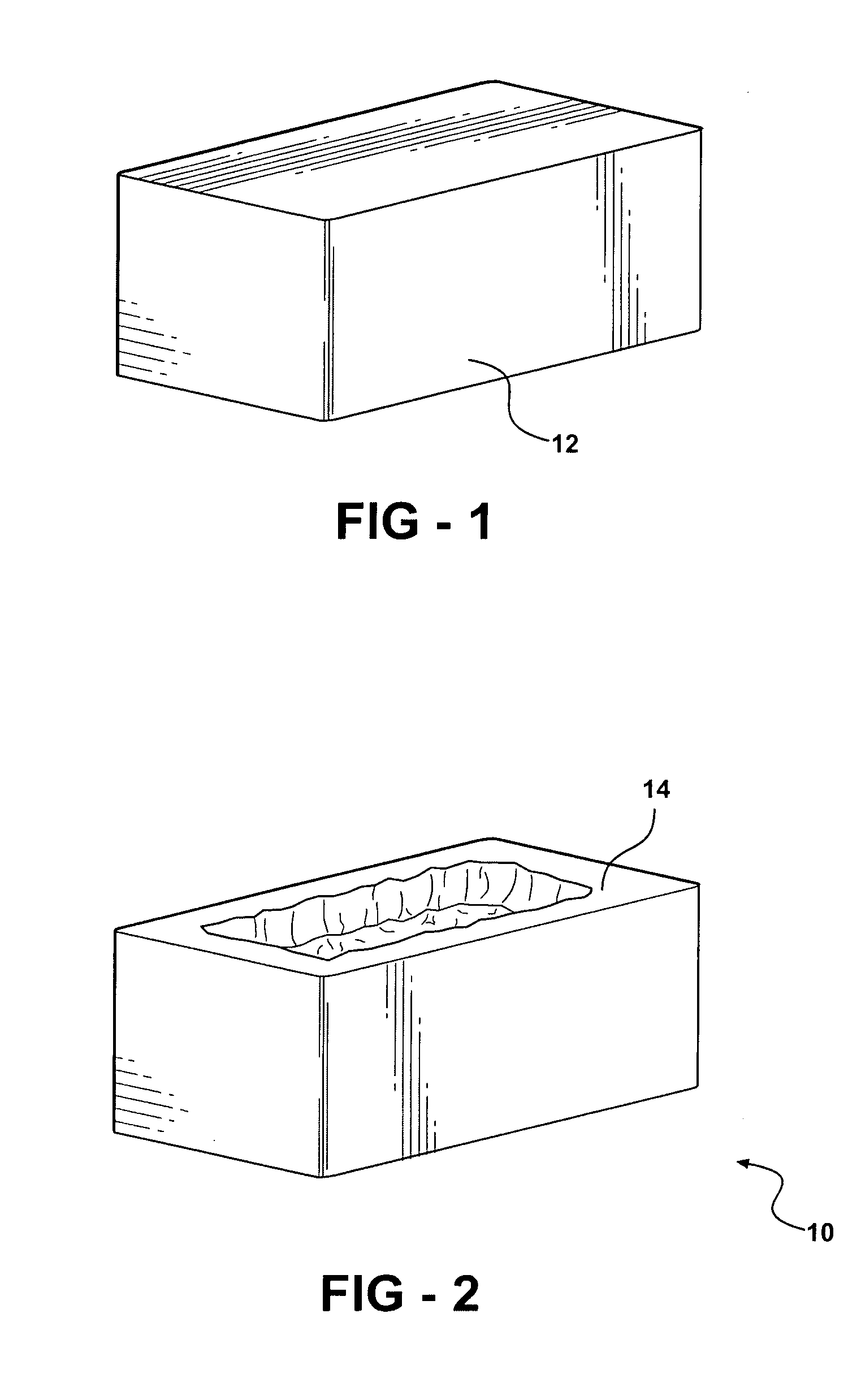Method of fabricating composite tooling using closed-loop direct-metal deposition
a technology of composite tooling and closed-loop deposition, applied in the direction of other manufacturing equipment/tools, nuclear engineering, railway components, etc., to achieve the effect of low cos
- Summary
- Abstract
- Description
- Claims
- Application Information
AI Technical Summary
Benefits of technology
Problems solved by technology
Method used
Image
Examples
Embodiment Construction
[0015]FIG. 2 represents a female stamping die generally indicated at 10 which may be formed by the method of the present invention. It should be understood that the method is applicable to formation of a wide variety of tooling in addition to stamping dies such as trim steels, flange steels, die inserts and the like.
[0016]The completed die 10 is formed beginning with the base 12 as illustrated in FIG. 1. The base, adapted to be supported within a stamping press, does not include the work engaging surfaces of the die and accordingly it is not subject to the same wear as the working surfaces when in use. It can generally be formed of a less wear-resistant, more ductile material and lower cost than the work-engaging surfaces of the die. For example, it might be formed as a casting from a relatively low strength steel.
[0017]Work-engaging surfaces 14 of the die 10 are formed on the upper surface of the base 12 of an alloy which is harder and more wear-resistant than the metal of the base...
PUM
| Property | Measurement | Unit |
|---|---|---|
| solubility | aaaaa | aaaaa |
| ductility | aaaaa | aaaaa |
| volume | aaaaa | aaaaa |
Abstract
Description
Claims
Application Information
 Login to View More
Login to View More - R&D
- Intellectual Property
- Life Sciences
- Materials
- Tech Scout
- Unparalleled Data Quality
- Higher Quality Content
- 60% Fewer Hallucinations
Browse by: Latest US Patents, China's latest patents, Technical Efficacy Thesaurus, Application Domain, Technology Topic, Popular Technical Reports.
© 2025 PatSnap. All rights reserved.Legal|Privacy policy|Modern Slavery Act Transparency Statement|Sitemap|About US| Contact US: help@patsnap.com



